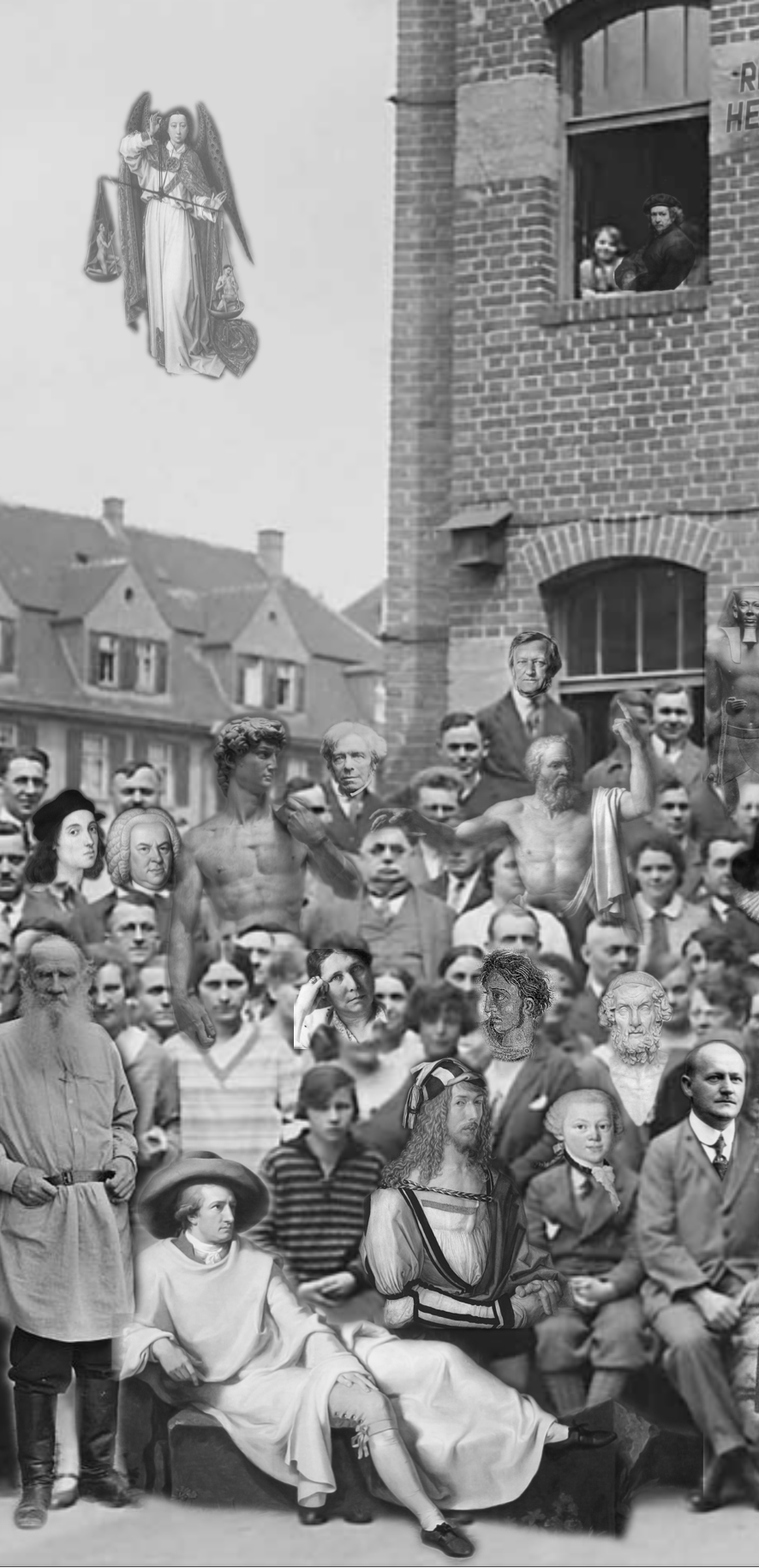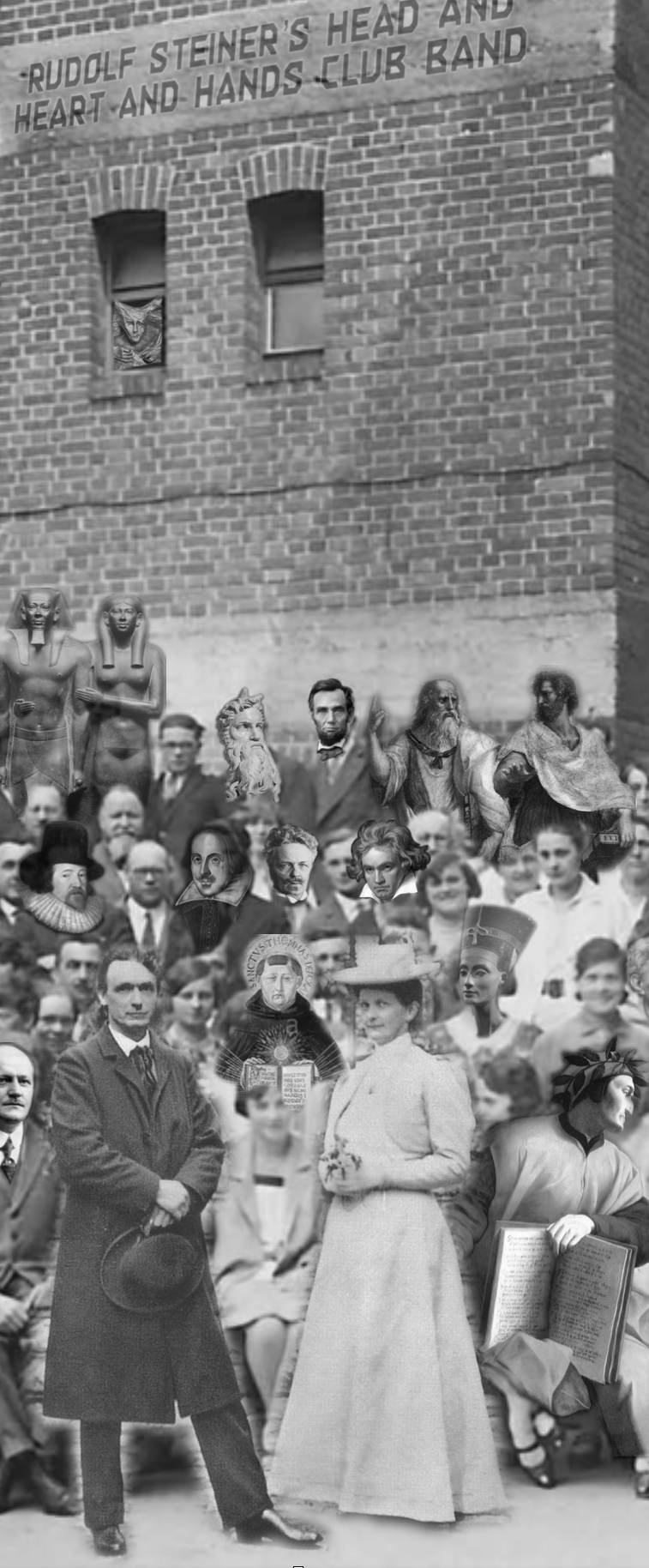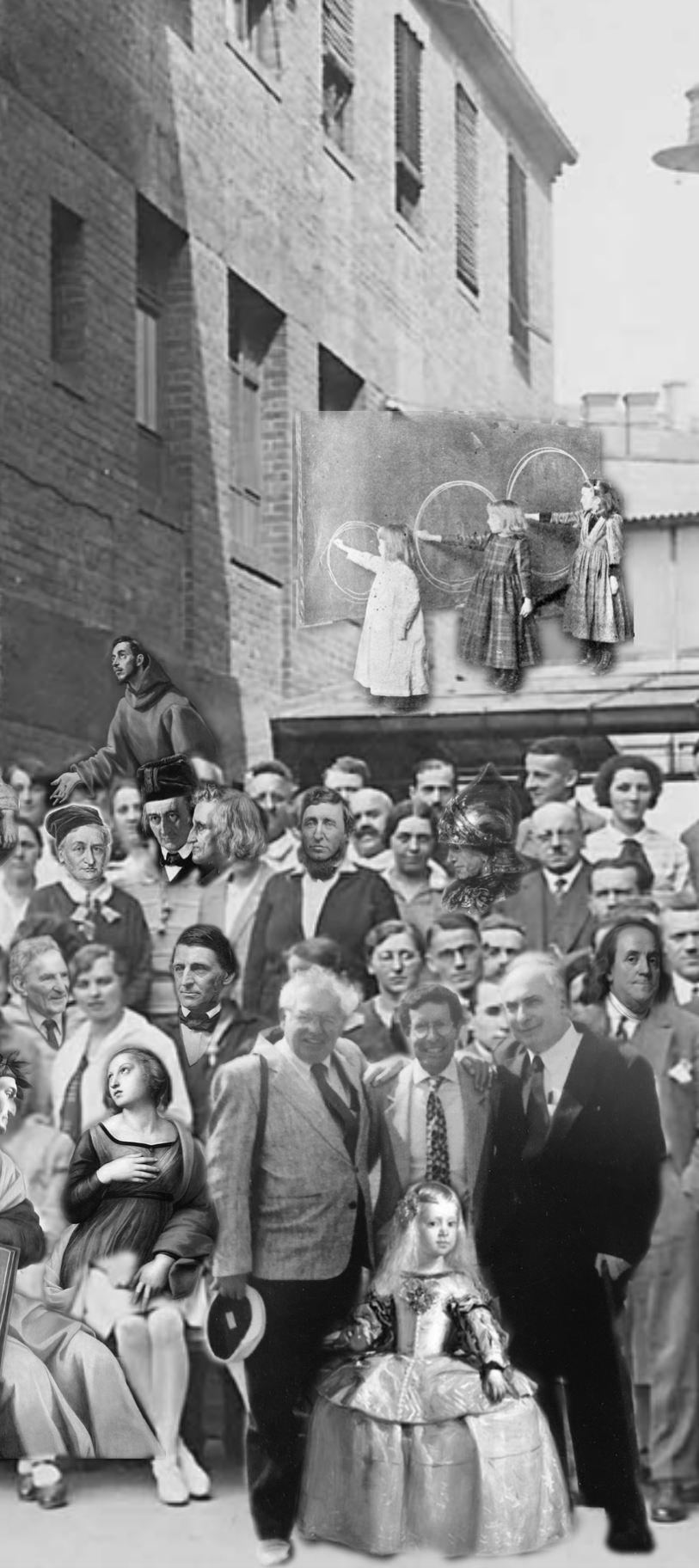CELEBRATING 100 YEARS OF WALDORF EDUCATION
THE FACTORY PHOTOGRAPH:
AN ARCHIVAL PRINT UNVEILS THE REALITY OF A WORLD-HISTORICAL MOMENT
Below this text is the original August, 1919 photograph of the entire workforce of the
Waldorf-Astoria Cigarette Factory in Stuttgart, Germany
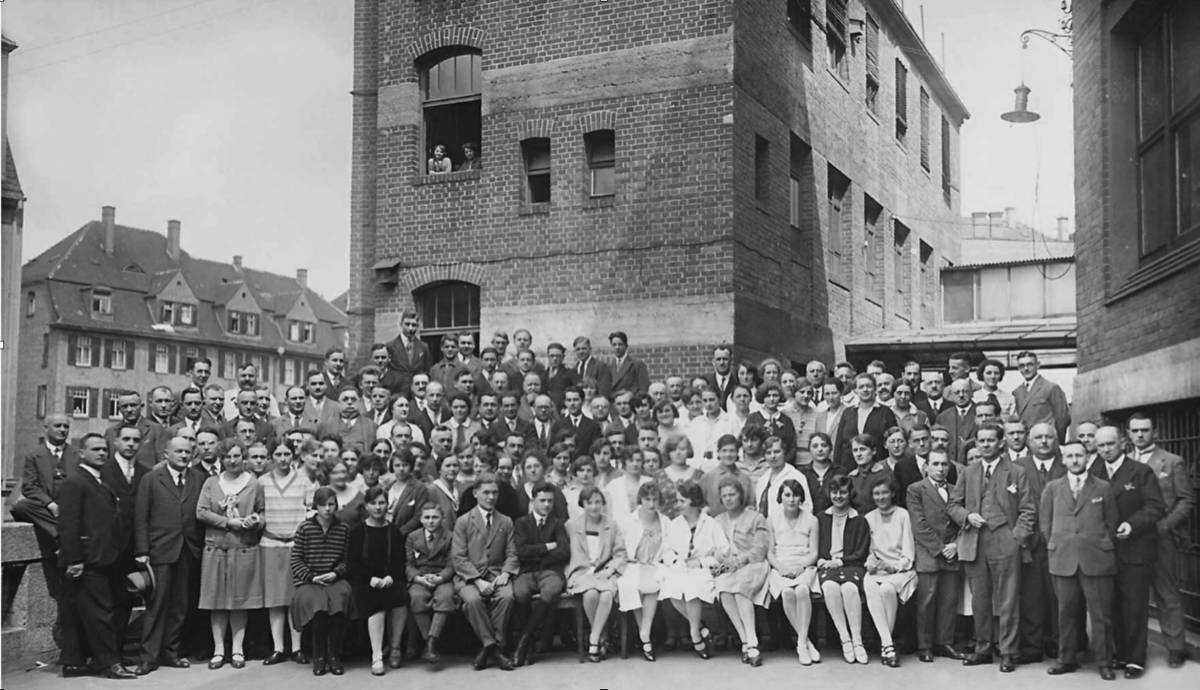
FACTORY PHOTOGRAPH VERSION 2
Below this text is the Version 2 photograph. Many of the workers portrayed in the original photograph were the ones who asked Emil Molt and Rudolf Steiner to create the school, but they were not alone. The workers' photo was taken just weeks before the first Waldorf school would be born. We tried to imagine the host of individualities — most human, some divine, many dead, some living, and some not yet incarnated — who gathered to eagerly help, support, and celebrate the school's founding. This photograph captures something of the vitality and joyous expectation that swirled that day on the factory grounds.
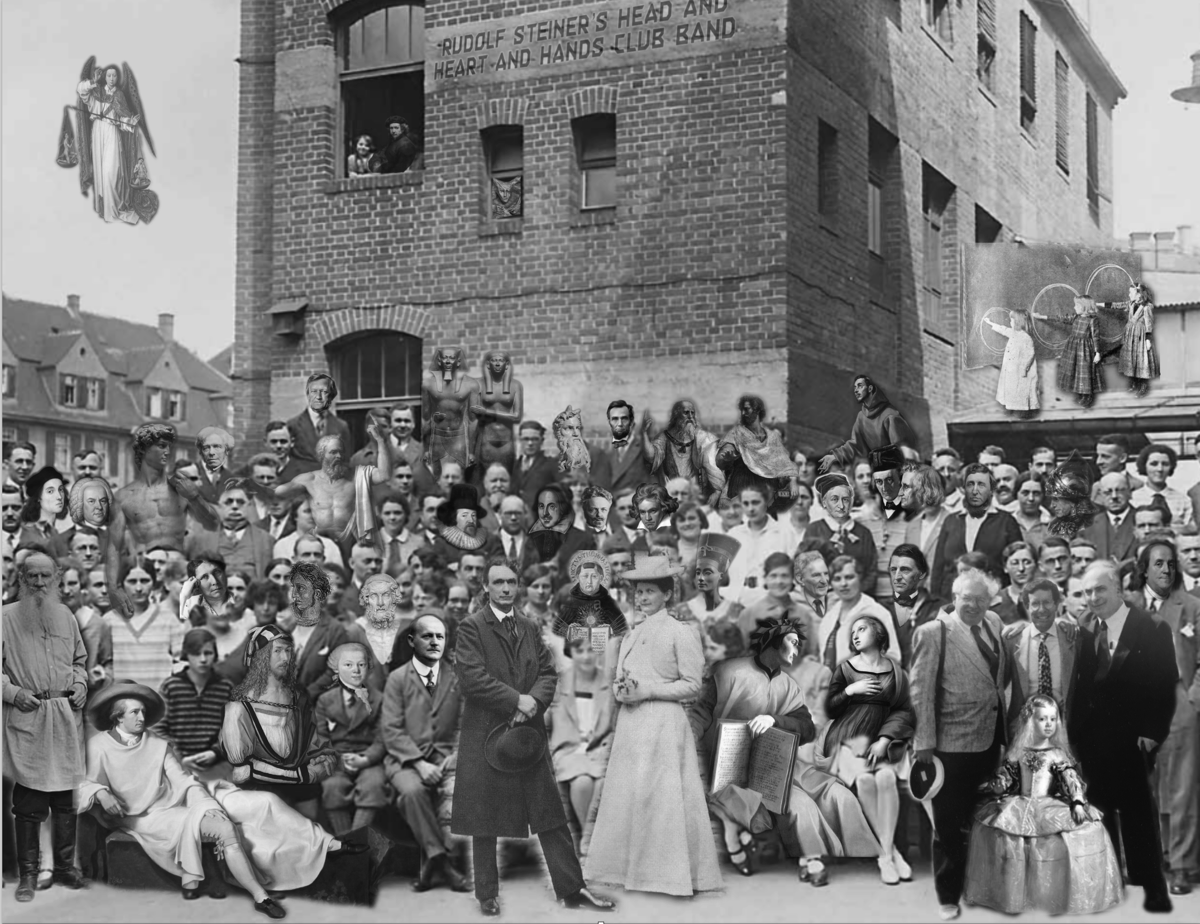
A GUIDE TO THE FIGURES IN THE FACTORY PHOTOGRAPH VERSION 2
For names and information about the Individualities present on that fateful day in 1919, hover your mouse (or tap with your finger) over the RED circled number. To simplify navigation through the crowded scene, the photo has been divided in three sections. Scroll down and you will have a chance to meet all of the nearly fifty visitors who may have appeared just weeks before the original Waldorf school was to welcome its first students.
CELEBRATING 100 YEARS OF WALDORF EDUCATION

Questions? Comments?
610.906.7644
76 Grouse Hill Road
Barto, PA 19504
